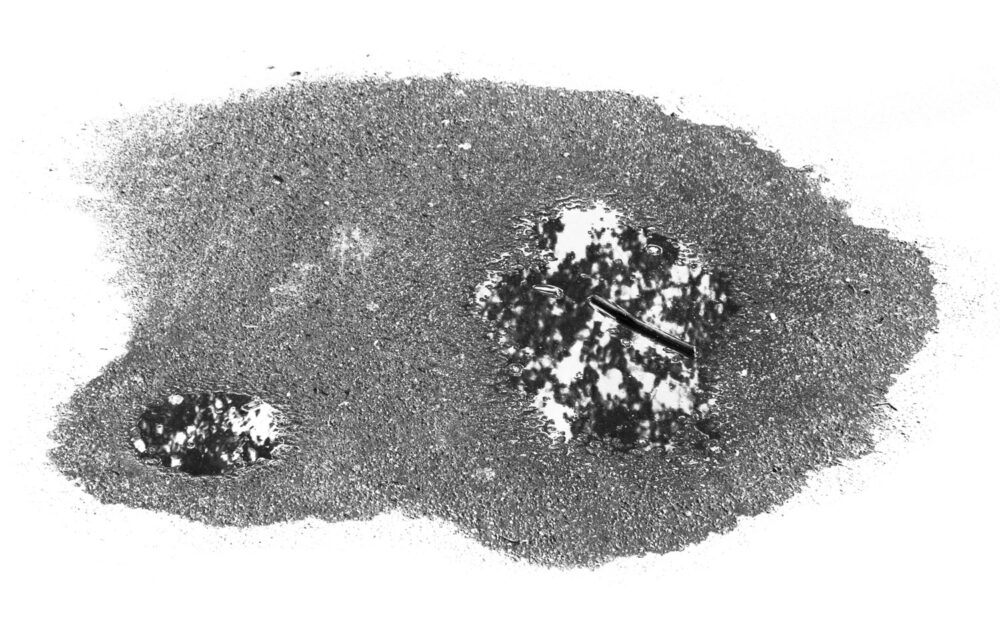1) Like some animals, puddles display a high site fidelity. They always return to the same place – their place, their hollow, sink, hole.
2) Puddles have site-specific forms that appear again and again.
3) Puddles are intrinsically fleeting. When not volatile, they lose their essence, their nature.
4) Puddles are a process and are constantly in transit.
5) Puddles are cyclic and recurring.
6) Puddles have two states: absent (dry) and present (wet). Puddles are constant, every now and again. Time and space, a continuum. A sequence of being and nonbeing, extended existence.
7) Puddles are faithful, though not reliable. The water changes – every rain is different. Puddles are more (or less) than water.
8) Puddles love depressions, cracks and potholes. They like it bumpy. Puddles snuggle, they nestle on floors and glide into grooves and holes. They follow irregularities, conform to every bump and dip. They smooth the surface, belie the depressions they fill. Puddles locate defects and conceal them.
9) Puddles leave sediment marks and stains.
10) Puddles accumulate. Mostly, they flow purposefully, attracted to their location.
11) Puddles traffic in the hidden. They hide beneath their mirror. What they harbour, they do not reveal in their wet state.
12) Puddles gather, not merely volume. Dirt, organic detritus. They catch rubbish, bind filth. Small pieces, large pieces. They are hyper-tolerant.
13) Puddles grow in the rain.
14) Puddles are wild but favour living in the city. Unintentionally grown on sealed soil. Paved, asphalted, laid out.
15) Puddles are the memory and the archive of the last rain (or leak, or street cleansing).
16) Puddles are murky and impure. Puddles have differently coloured water. Mostly, they keep it this secret.
17) Puddles hide their volume, their flatness a diversion. They are not deep, but neither are they always flat. Unnoticed, they form bellies below their reflective surfaces. They refuse insights.
18) Puddles start as interconnected clusters. The individuation process occurs through the evaporation of all connections.
19) Puddles can get very old. Dehydration is no threat. Construction sites banish them.
20) Puddles are constantly and imperceptibly on the move: highly dynamic, unstable, absorbed, always changing, in flux. Constantly disappearing. Sometimes faster, sometimes barely noticeable. They move inevitably towards their dissolution.
21) Puddles are horizontal: they are larger than they appear. They are connected to the whole area through water. They can have a catchment radius of up to one hundred metres. They are hot spots. Material and the area’s pollution are concentrated in them.
22) Puddles are vertical: they infiltrate the ground and evaporate towards the clouds.
23) Puddles are a largely human-made, anthropogenic phenomenon. Puddles thrive in the cracks of the human-created environment. They are a NatureCulture phenomenon.
24) Puddles are a medium where traces of places and very specific human practices can be read. They can become an observatory for grasping overarching and translocal processes and transformations on a micro level.
25) Puddle = Vol(Water) + Defect(Location) x Time
© Mirja Busch, 2023

read more in publication PUDDLE WATCHING